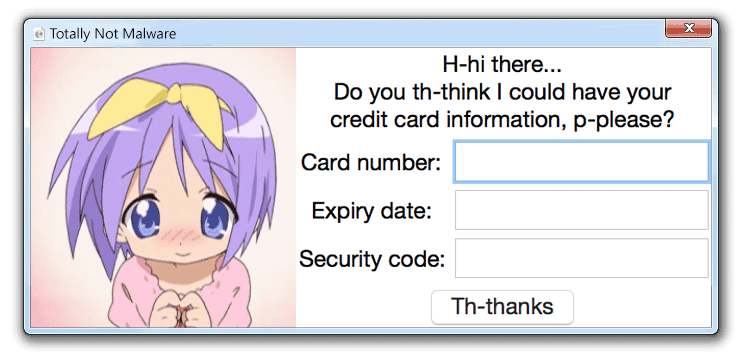I was trying to figure out the best way to write something about my recent experience playing both No More Heroes and Killer7 and found myself too dependent on lame descriptions of the story and mechanics. Both of those may be important, but I don't think I effectively captured what I actually got out of my playthroughs. So here's attempt no. 2.
Games are a frequently misunderstood medium. The most frequent debate is the one about whether games are art or just a toy. I would posit that even those that are closer to being a toy are still a kind of art. Fortnite may be a lowest-common-denominator game, but it is still the artistic expression of a team of people and the sumtotal of their influences and interests. Even if it is now a corporate-driven product above all.
Despite the fact that I would consider games to be a unique art form, very few game developers seem to take full advantage of what the medium has to offer. In fact, there almost seems to be a level of embarrassment for a lot of developers and writers who end up in the industry. I'm rather annoyed that I can't find it, but I remember a quote from one of the female developers or writers working on Dragon Age (maybe 2?) saying that she would get rid of as much of the "game" part of the game as possible because it didn't interest her. When you play something like DA2, you definitely get this sense. Why play it? Why should this not just be a visual novel? It's a challenging question that can be difficult to answer, but one that must be answered for a game to actually be meaningful as a real, artistic, aesthetic totem.
No More Heroes
One of the developers who does understand the potential for gaming as a unique medium is Suda51, who uses his projects as a springboard to explore his interests and influences. While you don't always get mechanical depth, the mechanics are always there to reinforce the themes and the style of the game. Take No More Heroes for example. You play as an incredibly violent psychopath (Travis Touchdown) who kills thousands of people in his pursuit for pussy. Seriously. That's the plot of the game. To place you in the shoes of this protagonist, everything is made exceedingly cool to do. You chop people up with a lightsaber and drive around in a rocket motorcycle. Normal mooks explode in a fountain of blood. Bosses are all unique, with their own backstory, and have particularly brutal executions. You are desensitized to what you're doing simply because it feels awesome to do.
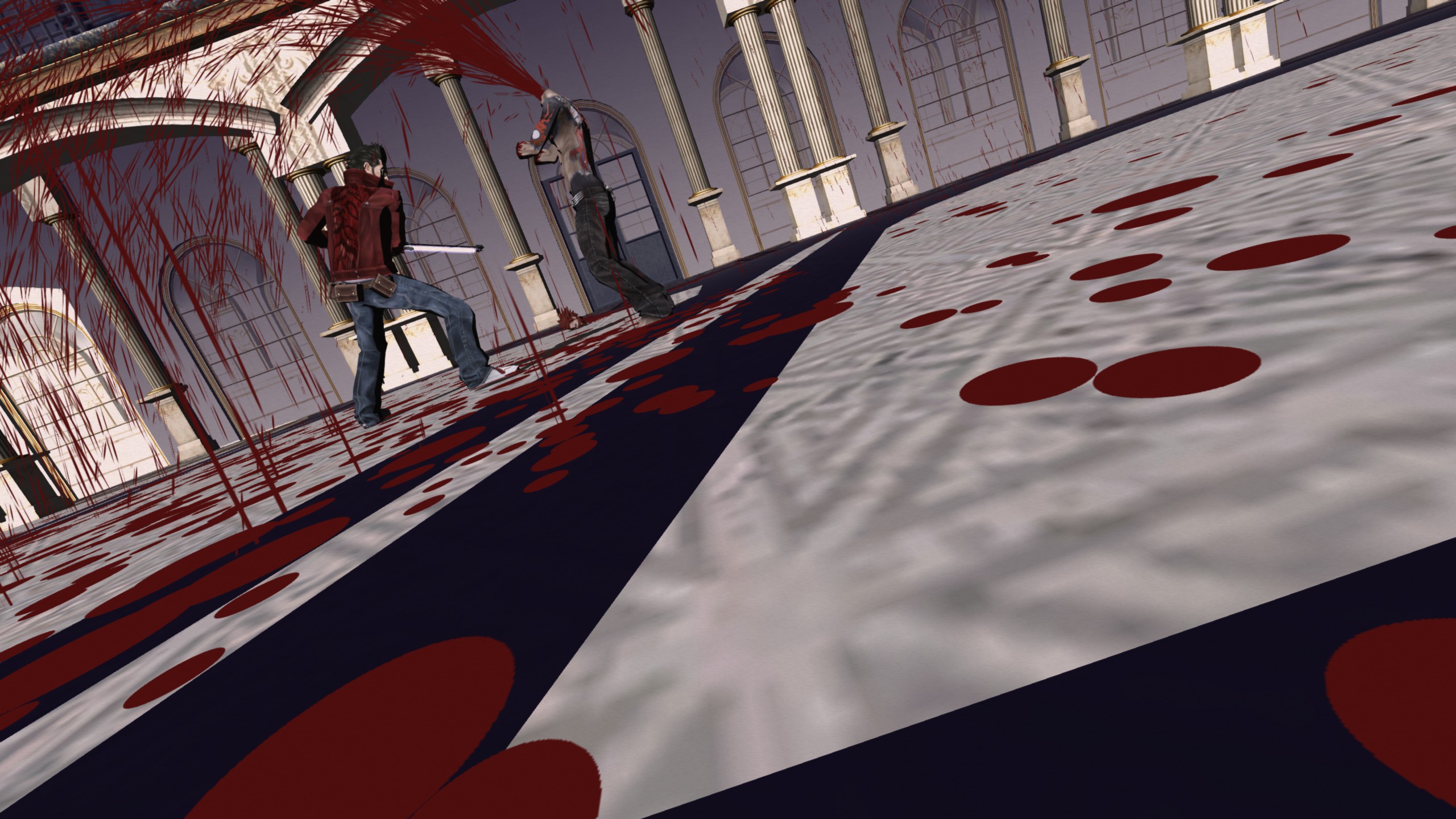
The game is filled with homages and references to things and people Suda loves in a way that doesn't feel contrived but contributes to the overall aesthetic and setting. Even the name is a likely reference to the same-named song by The Stranglers. The blade katana is an obvious reference to Star Wars. Travis' room is littered with pop-culture paraphernalia and his shirt is emblazoned with some doki-doki moe-moe anime girls. At one point, Travis passes out on a bus and imagines himself playing a 2D SHMUP. Suda51 wants to place you into his world, his mindset, and his influences.
On a mechanical level, it is rather simple. You have access to a few types of attack and a few combos. There are a handful of weapons with trade-offs and upgrades. No one is going to compare NMH to something like Dark Souls any time soon, but it gets the job done and is more than servicable. The focus of the game is the style and the feel of things. You are a dorky, otaku assassin motivated by sex and murder. To gain access to more murder and sex, you complete mundane part-time jobs as a debt-slave to your assassin organization. Why do they want you to kill these people? Why is there an assassin organization with a ranking system? Who cares! All you care about is murder and sex. And that's all Travis cares about as well! It is certainly more than the sum of its parts. Every aspect, from the mechanics, to the HUD, to the cel-shaded art-style, to the gonzo story all serve to make you feel this feel.
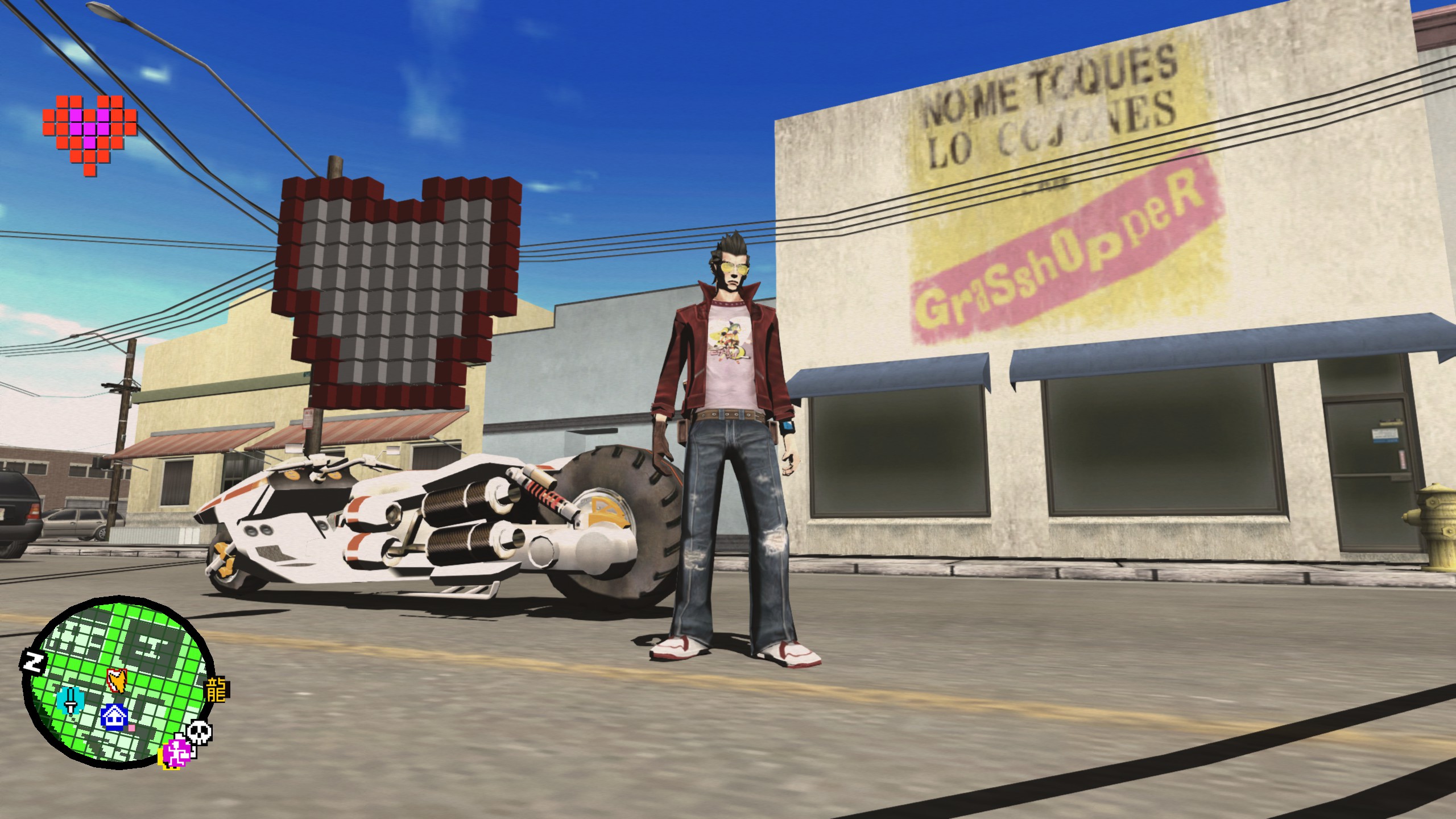
Some of the game is lost with the game's transition to other platforms like the (much-maligned) PS3 port and the recent PC port. The game was originally developed for the Wii and took advantage of the platform's unique capabilities to enhance the feel of the game. Some depth afforded by the high/low stance system is neutered when it takes a simple button press to accomplish the same thing. Instead of miming masturbation to charge up your beam katana, you just waggle the joystick back and forth. Overall, it's not a very good port and it remains broken to this day. There are still plenty of crashes, some achievements are outright impossible to complete, and the settings menu is almost non-existent. I'm disappointed my first experience with the game was not with the Wii version.

Killer7
While No More Heroes is probably Suda's most popular game series, Killer7 is perhaps his most cherished. Everything about Killer7 is kind of anachronistic and goes against what you would expect from most games. The first thing you'll notice is how it plays. You don't have free control of your character, but instead more forward on-rails by holding the A-button. If you hold down the right trigger, you enter a shooting mode, where pressing A now fires your weapons. It's as if the developers realized that free-movement wasn't necessary for the game, so they got rid of it. And it serves to complement the themes of free will and invidualism present in the game by denying you this mode of engagement.
The next thing that will hit you is the overwhelming style the game posesses. Taking some cues from his prior games Flower, Sun, and Rain and The Silver Case, he uses color very effectively and carefully. Most levels have a strong color palette to them. Such as the bright whites associted with Alter Ego and the much harsher and darker reds and oranges seen in later levels like Smile. All this is paired with a very striking cel-shaded look which is both very of its time and timeless. The HD remaster available on the PC looks outstanding. All that's needed is a higher-resolution and the game can go toe-to-toe with anything that comes out now on a visual level. And the environments and models are rather simple! You don't need high visual fidelity to have striking presentation, just a clever visual style (which, is still an incredibly challenging thing to pull off).
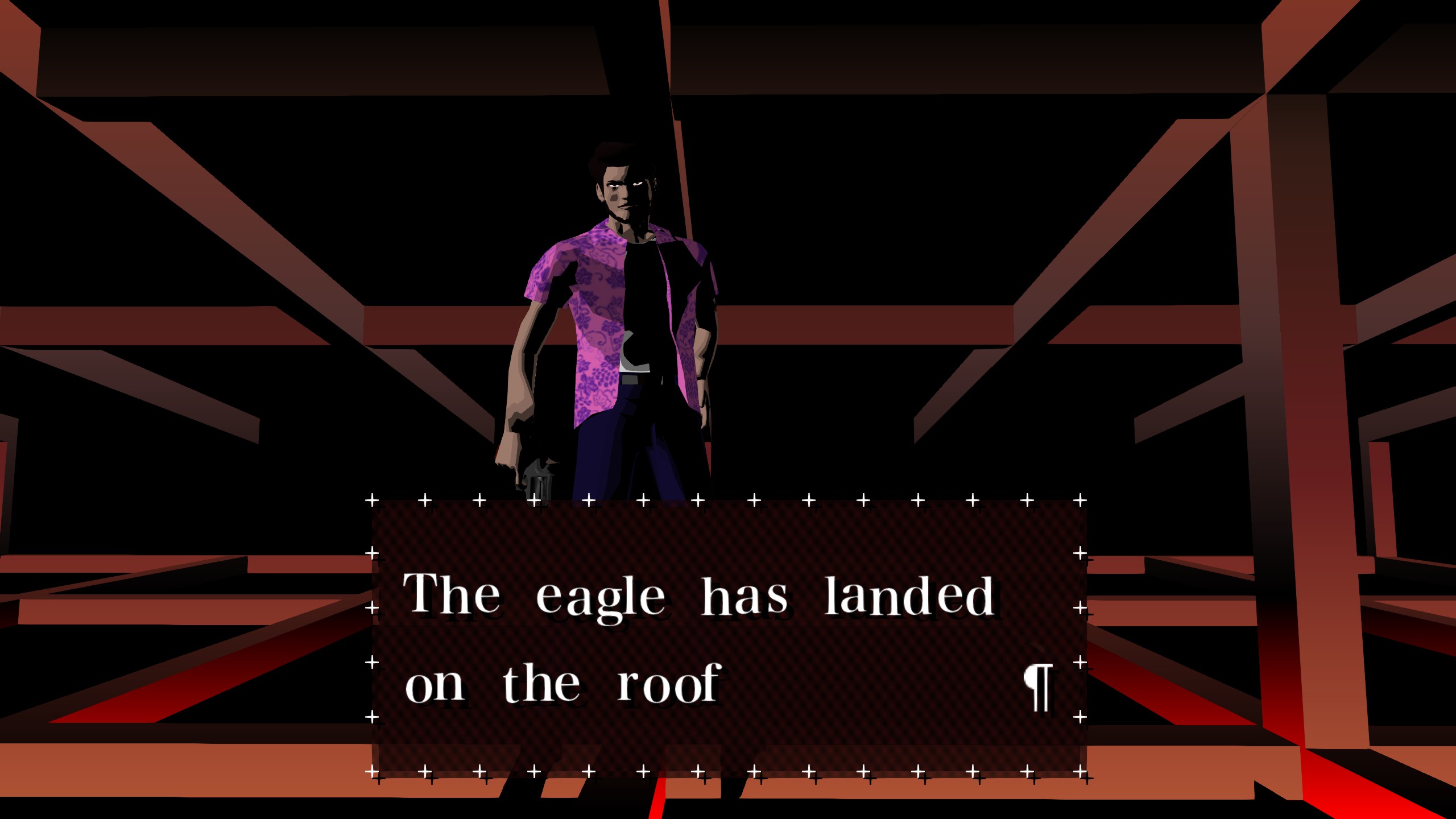
The thing that most cuts against the grain is what might be described as an arthouse story. It's multi-layered and very complicated. On the surface, it's almost an espionage thriller where the global power structures are engaged in a secret war for control over the future of the world. But dig a little deeper and you get a nuanced take on Eastern vs Western modes of thought, free will, technology, government, philosophy, and so much more! All this in a game where you play as a split-personality assassin who frequently confers with a man in a red gimp suit.
It's also a character drama focusing on the "protagonist" Garcian Smith and his relationship to the world, the rest of the personalities of the Killer7/Smith Syndicate, and the mysterious Harman Smith. While not all of the characters get the full development they were intended to, some, like Dan Smith, get their time to shine. His story with the truly psychopathic murderer Curtis Blackburn is one of the highlights of the game for me. It's also one of the places where you see the most extreme violence in the game. And boy, it Killer7 violent.
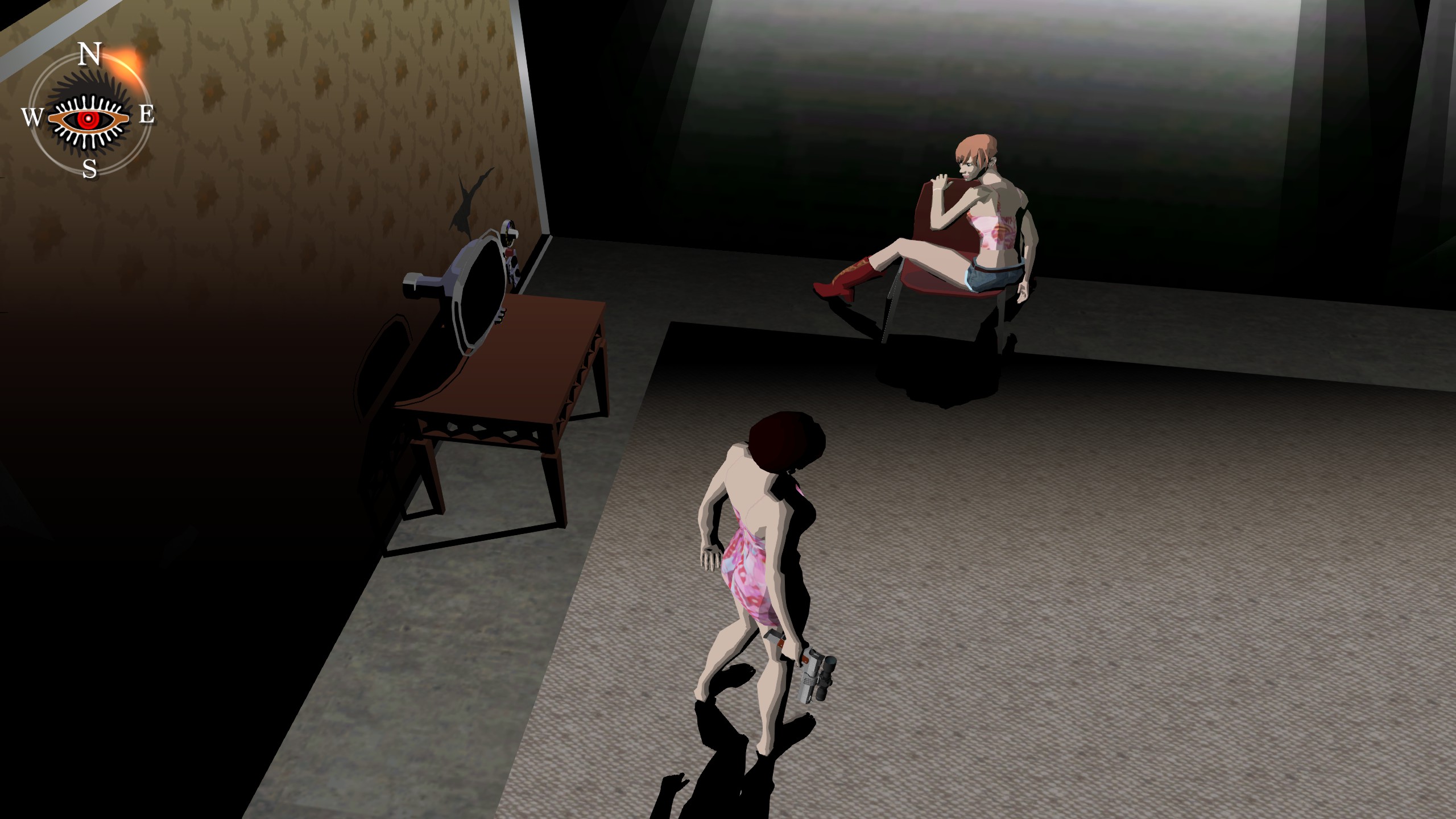
It's not as over-the-top or cartoonish as what we get in No More Heroes, but much more shocking. In one sequence, we see things from Curtis Blackburn's perspective as he coldly executes a woman in his car, before entering a high-rise business complex to kill several more. Blood pours out from their foreheads as the bodies slump over in a realistic looking fashion. The game can also be quite sexually disturbing. The most notorious sequence is probably the one where Samantha Smith basically rapes the elderly Harman Smith, who is immobile in his wheelchair.
As is the case with No More Heroes we also get plenty of homages and references in typical Suda fashion. Mask de Smith is a reference to one of Suda's close friends and collaborators, Mask de Oh. All of the playable characters being part of the "Smith" syndicate is a reference to Morrissey and The Smiths. We see copies of real world literature and music, like The Picture of Dorian Grey. And, like NHM and the aforementioned The Silver Case, there are some references to songs from New Order and other bands and artists that Suda likes.
Killer7 takes full advantage of the medium to combine a unique aesthetic, interesting plot and characters, and meaningful mechanics to deliver an experience that is only possible in a video game. It's probably one of the best games available if you ever wanted to prove to someone that games have plenty to offer. Compare it to something like Uncharted. I don't hate Uncharted, but those games are basically interactive movies where the mechanics and presentation almost feel like an afterthought or an attempt to capture what you get in a movie. Above all, Killer7 is a game.
Games are cool
Suda51 was quoted in a 2005 issue of Nintendo Power as saying "It is my firm belief that video games are the most challenging form of artistic media we know." And he is 100% right. The possibilities of games are limitless and you're able to use video, interaction, music, sound, text, and technology in ways that are simply not possible in any other medium. It is a shame that games are so frequently reduced to simply lame mechanical descriptions or to be used as yet another vector in the culture war. I play Counter Strike and greatly enjoy it, but games are so much more than a toy or a sport. Games are most meaningful as an expression of a single, unified vision to tell a story and engage in the player in a way that is not possible in any other medium. An experience with a beginning, middle, and end. Not a "live-service" that is designed to be played forever.
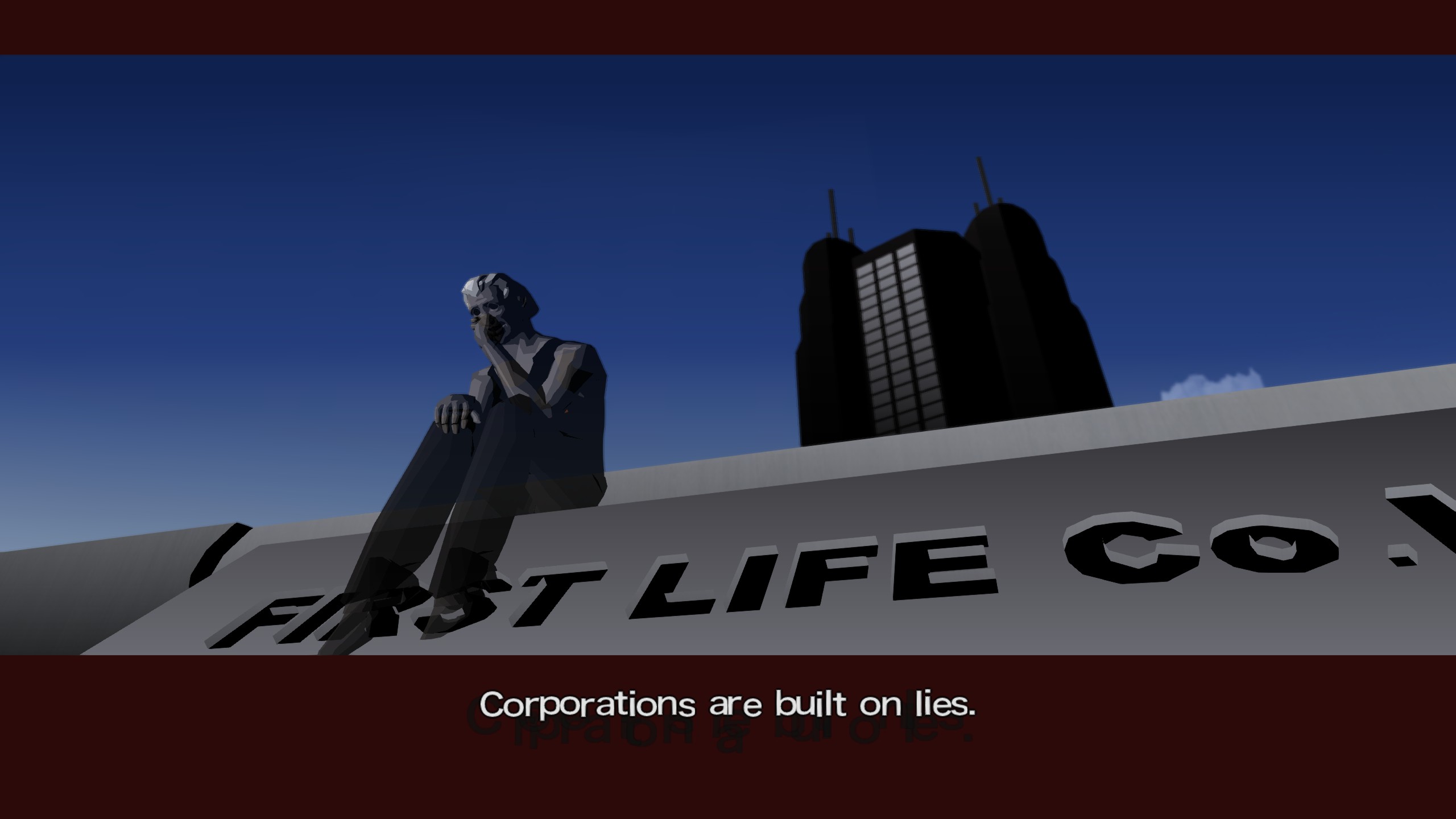
The poor state of gaming currently isn't due to every game being stuffed full of "woke propaganda". That's simply a symptom of a lack of direction and passion. Direction and passion being the two things required to make something truly great and transcendent. God bless the Tarantino of gaming, Suda51 himself, for creating games that he wants to make. Games with a clear vision, even if they usually don't accomplish everything he was aiming for. While Killer7 may always be a playground for weirdos, the commercial success of something like No More Heroes proves that there is plenty of space for projects like this in the landscape. People want them. People will play them. And people will return to them again and again, even if they don't understand why. You can't fake soul, and Suda has got it in spades.
 Click here to see games I've beaten this year and what I'm currently playing!
Click here to see games I've beaten this year and what I'm currently playing!



